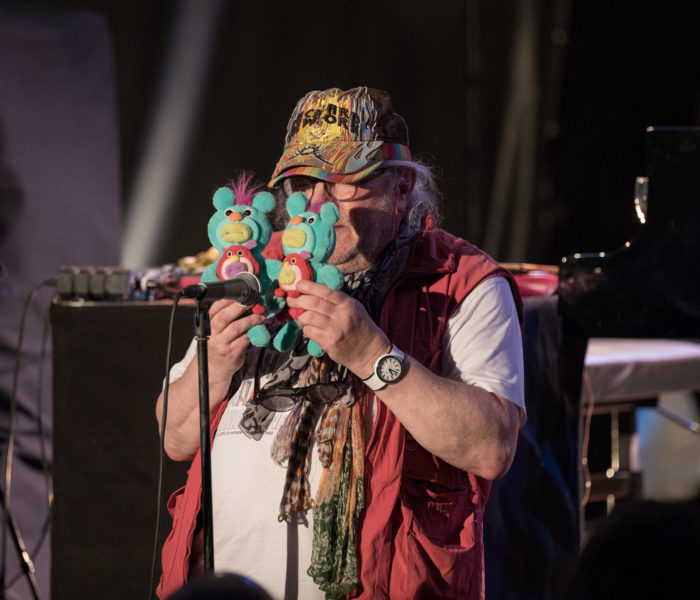Einstein on the Beach quickly established itself as a key work of contemporary music. It quickly entered the repertoire, has been staged several times over the decades in the version directed by Bob Wilson, and recorded three times (1979 and 1993 discs, DVD captured in 2014 at the Théâtre du Châtelet).
Jean-Luc Plouvier, pianist and artistic director of Ictus, tells us ...
What prompted Ictus to tackle such a monument in 2018, more than forty years after its creation?
The record came out in 1979, that's right, and I was 16 - does that answer the question?
How did you choose the collaborations for your version, which do not seem obvious at first: Suzanne Vega as the main interpreter of the texts (a singer identified as a pop/folk singer), the Collegium Vocale Gent (a choir initially specialising in early music) and the visual artist Germaine Kruip (identified more as a visual artist than as a director)?
It was an evening after the show at the Kaaitheater in Brussels. The director of the venue, Guy Gypens - who had been the director of Rosas and had always supported us -, the manager of the Collegium, Bert Schreurs, and I took a pledge: OK, we'll do it, at any cost! We were 16 at the time, of course... The Collegium? You might be surprised to find out what a Collegium chorister is today. Not one of the 14 singers who volunteered for the adventure is a stranger to pop music. Most of them have their own little home studio and fiddle with their computer. That's how the world goes.
As for Suzanne Vega - the idea came from Bert - she meets the criteria of true literary temperament and impeccable diction. She also has an authentic New York accent, very soft, with a familiar strangeness and without emphasis - an instrument we did not want to do without. The type of modernism that is deployed here finds its source in Gertrude Stein; it is a question of passing in all elegance through a very edited libretto, very chopped up, all in repetitions and parataxes, and polyphonic in its texture: we entrusted Suzanne with all the texts, all the voices. In this video, you'll see her paying tribute to the writer Carson McCullers, wearing little glasses, so very much a pop star, during a poetry marathon. We stumbled upon it and our decision was made!
The "visual installation" stems from a quest that is more difficult to define, from a utopia that is always at work. It is undoubtedly a question of acknowledging a slight falsity in the presentation of contemporary music, when it claims to fit a little too well into the classical concert setting - and I am not picking on anyone here, I am including Ictus in the general symptom. There is a sort of insincerity that comes out of it, an indefinable impression of artistic cowardice or of a plane without a pilot. On the other hand, to be content with flanking the concert with a video projection - well, that's cheating.
We had some experience of the very long concert, too long, which presents itself as an unstoppable flow, giving rise to different listenings, different adjustments of attention or distraction by the listener. It is not uninteresting to include the wandering of listening in the listening device itself. I'm not sure we're going to continue with this "I propose, you dispose" approach, but for a while it produced a certain euphoria, on both sides of the stage.
The first request we made to Germaine Kruip was precisely to blur this edge a little, to suggest an erasure of the frontal space and to make it circular.
Einstein, it spins, it doesn't stop spinning
The other, more decisive request was that she help us, through the scenography (quite simple, but we had to find a way), to make the musical work itself the central theatrical theme. This show is an apology for the pure concert! It was a question of clearly identifying the veins, the different diagonal lines of force captured in this repetitive and polyrhythmic machinery where everyone listens to each other on the verge of vertigo. No conductor in the centre, for example, but a rhythmicist in the garden who gives the pulse, and another in the courtyard who helps us count the innumerable interlocking repetitions and repeats. Then there are musicians in the centre who reposition the lighting; others who stand up to give a signal to the sound engineer or trigger a light switch, turn the page for a soloist, things like that. There was a very materialist project, inspired by contemporary dance - and in particular by our friends from Rosas - to do without the backstage, to value all the gestures, the graceful and the utilitarian, and to treat them with the same dignity.
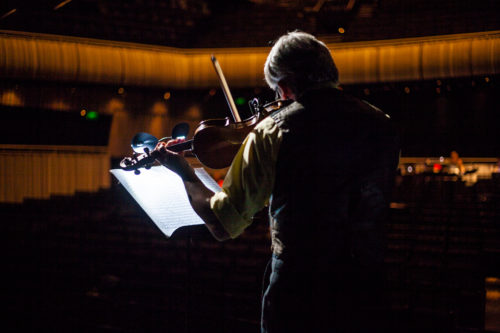
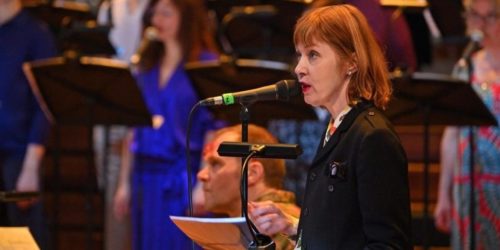
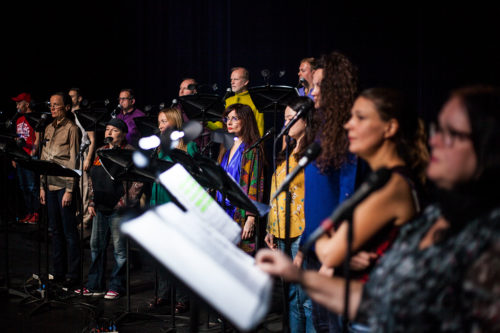
Your version is very singular from a musical point of view, there are even some sequences where it is difficult to recognize the score, especially because of the sounds used by the two synthesizers. I heard some almost techno passages, some moments where the pop aspect is clearly assumed. You told me that nothing had been changed in the score. So what makes you sound so different from the original versions?
Each score engages its treatment... Not only what the relationships between the notes say, not only the notations and didascalies, but also the spirit that blows in its graphy, its presentation and its gaps. If I am to surprise you, I must reveal this: there is no single, finished, detailed score ofEinstein on the Beach. For example, nowhere do you find a summary of the nomenclature (of the numbers), nor the ideal number of choristers, you don't know if the singers in the solo parts are to be chosen from among the choristers or if they are to be hired separately, you don't understand why three flutes are needed for only a few minutes and not all the way through, if an alto or tenor sax is needed, and so on.
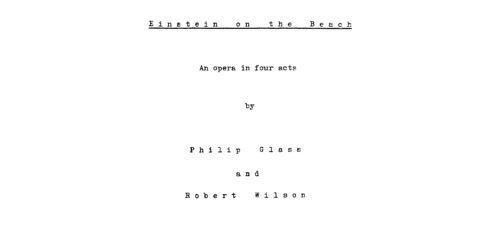
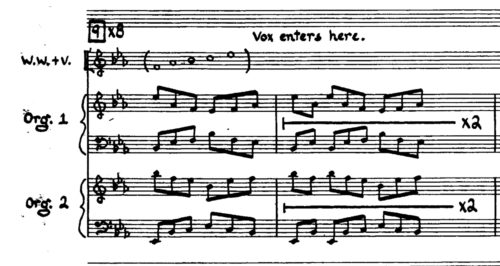
You understand that you need two electric organs ("organ1", "organ2", says the score), but there is no indication of registration. There is no indication of tempo or dynamics.
In short: the score looks in some ways like a 17th century score, nicely handwritten - the Olivetti-typed title, however, leaves a clue as to its era. The texts are delivered separately in a small pamphlet, but the way to connect text and music is only vaguely mentioned. Thus we have had to carry out a real reconstruction work based on the record sleeves (two versions), on the hall programmes available online, and of course on listening to the recordings themselves. The history of the creative process of this opera is not without importance either. The story is told in fragments, and the score I described bears the imprint of this process: collective work in turmoil, trials and failures, the emergence of meaning and form through editing and re-editing, a sign of reworking scribbled here and there at the last minute to bring the durations into line with the stage requirements, etc. All of this is perhaps a bit of a mystery to me. All this may be a bit discouraging in the first phase of the work, but it turns into a very exciting challenge later on. You understand that the collective work must continue, in short, that it remains open, and you promise yourself that you will not be satisfied with a kind of musicological archaeology. The work distracts you from this approach, it is still vibrant with potential to be explored.
Thus the "pop" episode that you mentioned, Building, is the most open of the whole score. Formally, it has the value of anintermezzo. A complex combination of rhythmic arpeggios for the two organs, in diminution or augmentation (as usual, I dare say) seems to be coloured by wind and voice harmonies, to which the composer laconically gives the pentatonic mode to be used (and you're on your own). On the two available discs, this texture also supports a saxophone solo: rather 'free' in the '79 version, and a dreadful 'FM jazz' solo in the '93 version.
We then came up with the idea of pre-recording the organ parts in MIDI in the spirit of dance music (sequenced, mechanical, very fast, filtering the highs, with a good big resonator in the bass), and entrusting the solo to our flutist Michael Schmid. At the time, he was studying Sciarrino's complete works for flute. I made him a demo by mixing the synth sequences with Brian Ferneyhough's Unity Capsule drowned in the echo, he immediately understood the idea of the improvisation to be done, it was in the box. I don't want to accumulate anecdotes, but I'm trying to convey a bit of the spirit that reigned during the preparatory work. And I'll say it again: this spirit is nothing more than the wind that rises when you open the score. We were not driven by any idea of profanation, but artistic fidelity also implies, as all performers know, being able to go through transgressive moments. A furious audience member took me to task about Building after a concert. He felt cheated; he didn't believe me; he didn't admit that there could be a fracture between the writing and the sound image.
It takes great stamina and extreme concentration to play this work, from Philip Glass' "cow period", as you announce on the Ictus website. You yourself spend a lot of time at the keyboard on stage. How should you approach this performance as a performer? How do you come out of it?
I love this period, I admit it. The little permutations on five notes, the unpredictable additive and subtractive rhythms, at high speed, all this is given without any shame in its pure mechanicity, and yet it shakes, it doesn't stop shaking, memory and perception are constantly thrown off. We then hear additional voices, the famous psycho-acoustic sub-products of repetition theorized by Steve Reich.
This trembling of the simple object is the true pulp of minimalism.
It calls for a very particular state of play in the performer, one that is both inflexible and gentle, one that welcomes accidents (there are always some) and resolves them like a seamstress resolves a snag in the thread of the hand. No, it's not so exhausting to play. I'm sad when it stops after three and a half hours, I don't feel like going to the bar, I'd like an encore. The interpretive tension, the one that animates the solar plexus, is not directed here towards strength, nor towards the great phrase, nor towards prowess, but towards a kind of madness of moderation. Add nothing, follow this necklace of tens of thousands of pearls, slip through the polyrhythms like a lizard, and go like this(andante even when it goes very fast) to the end of the tunnel.
Giorgio Agamben has some remarkable words about the power of restraint. He quotes Dante: " He who has the use of art has a trembling hand ". And he adds: " Who lacks taste never manages to refrain from doing something, lack of taste is always a not-power-not-do ". The later Philip Glass, I lose him. In my opinion, he stops shaking.
Interview by Guillaume Kosmicki



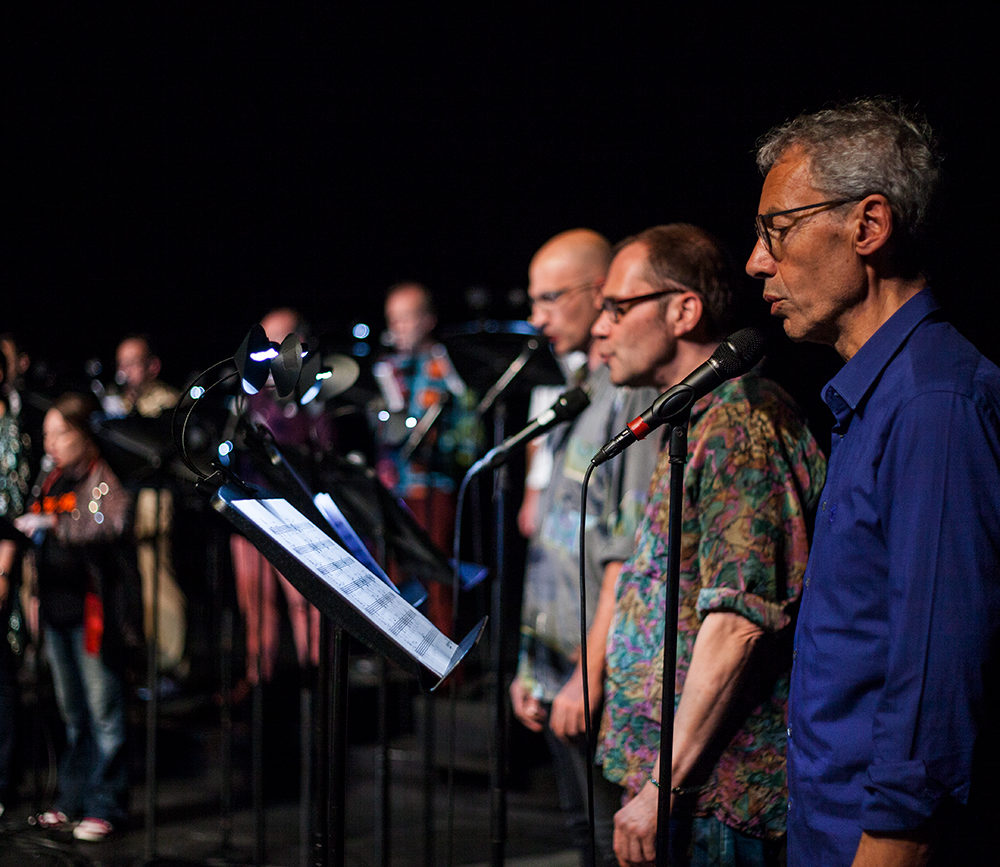)



